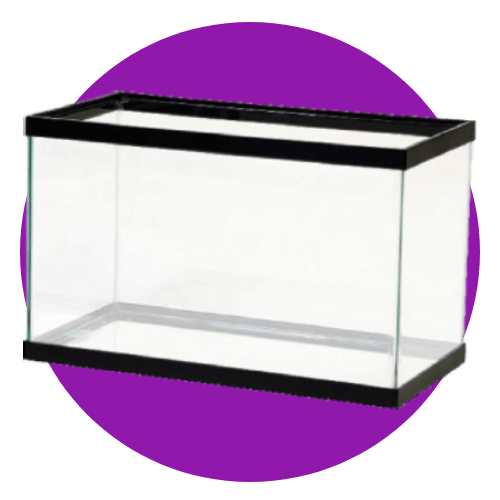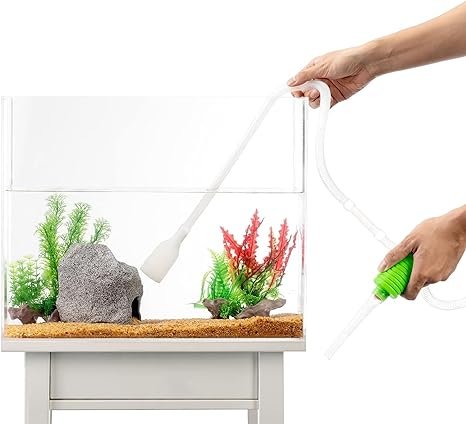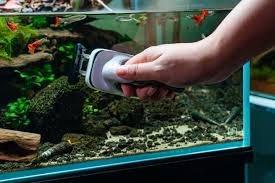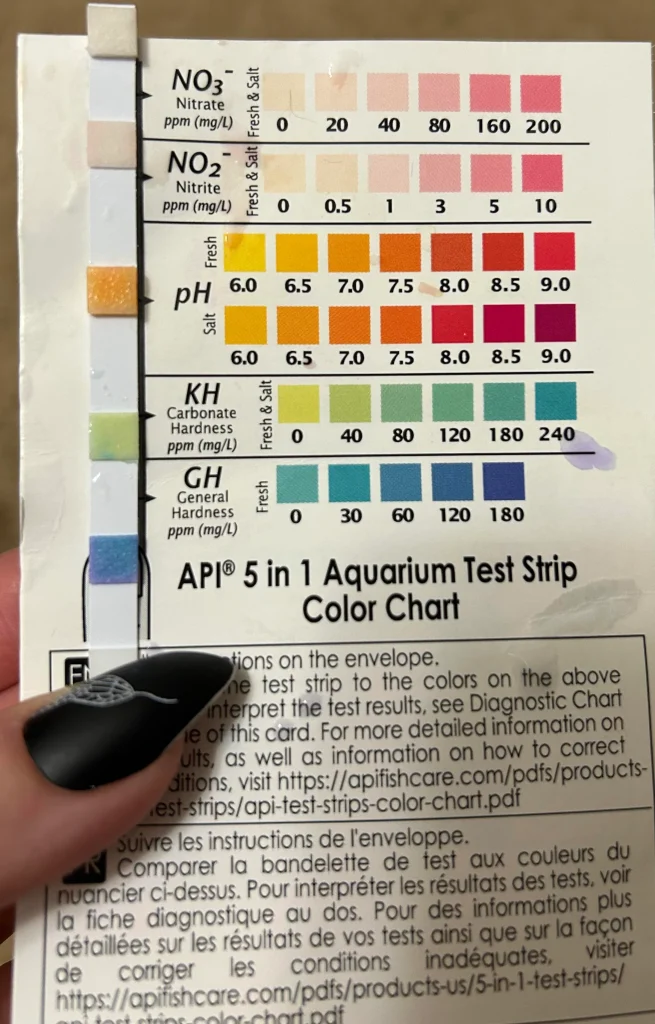
Chapter 3 - Setting up & Maintenance
The no-stress guide to set up and maintaining a guppy tank
Look at you- you’ve made it to the last part of this guide.
By now you know what it would be like to care for guppies and have a general idea of what equipment you need to get.
And by the end of this article, you’ll know:
- How to set up your first tank
- Be able to set up your first tank
- Know how to perform regular maintenance
- Be able to test the water and make adjustments accordingly.

Setting Up Your First Tank
A step-by-step breakdown, explained like you're 5
Setting up your first tank
Run Equipment
Fully assemble and run your equipment
Wait 5 Days
Let it run for 5 days
Water Change
Test the water and change 50% percent of the water
Repeat
Repeat the process 4 more times until water is stable
Step 1: Assemble & Turn On Your Tank
- Set up your tank by assembling it.
- Place the substrate and decorations in the tank.
- Install the filter and heater, then fill the tank with water.
- Add water conditioner according to the label.
- If you’re using real plants- go ahead and plant them.
- Then, turn on the heater and filter.
- Sprinkle a little bit of fish food into the tank. That will kick the ammonia and encourage the filter to start working faster.
Step 2: Let It Run
- Let the tank run as usual for 5 days.
- After 5 days, remove 50% of the water and replace it with conditioned tank water.
- Let it run for another 5 days.
Step 3: Test Water & Repeat
- Test your tank water using a testing strip. Your levels will probably be very much out ideal parameters- which is expected.
- Do another 50% water change as before
- Wait another 5 days, and test the water again.
Patience is the key to this process. It should take a minimum of 3 rounds before your water reflects stable parameters. Even if your water is passing the tests before the 3rd cycle- don’t add any fish yet. The water can change parameters pretty quickly (in what is called a water crash) and kill your fish.
What you’re doing in this process is establishing the benefecial bacetria in the tank. Without it, parameters will flactuate and your fish might get shocked and die.
It’s best if you do this cycle for about 3-5 rounds. Testing is key here. Once you get 2 “positive” tests in a row, do a final water change and then you can add your fish in.

Regular Maintenance
How to care for your guppies so they never want to live the tank
Regular Maintenance Overview
Feed your guppies commercial fish food twice a day. You can supplement that with another daily feeding of treats- be it live food (like brine shrimp) or vegetables (like cucumbers or peas).
Once a week you’ll want to change about 25% of the water, vacuum the substrate, and scrape algae.
Once a month you’ll have to take your filter apart and rinse it in tank water to remove debris so it maintains it’s flow.
Feeding your guppies
We’ve touched on the topic of feeding your guppies in an earlier chapter, so we’re just going to quickly recap:
Guppies can eat a ton of different things. Those include:
- Commercial fish food
- Live food (like brine shrimp)
- Vegetables (like peas, zucchini, and cucumbers)
- Beef liver
- Egg yolks
Most fish keepers feed their guppies commercial fish food twice a day. Then there’s room for a treat- which will be live food (with brine shrimp being the most popular) or vegetables on a skewer (makes it fun to watch and cleanup a breeze)
Weekly Cleaning

Siphon Substrate
Ensure a clean guppy habitat by siphoning debris from the substrate, promoting a healthy tank environment.

Scrape Algae
Preserve the tank's visual appeal by periodically scraping off algae, preventing excessive growth for a balanced and pleasing guppy aquarium.

Change Water
Maintain optimal conditions for guppies through routine water changes, reducing stress and supporting their vibrant health.
One thing you’ll have to do monthly is to clear your filter. Like the others, this a super simple process, but there’s one important thing to remember here:
You have to rinse the filter in tank water. Tap water will kill the beneficial bacteria.
All you’re really doing is removing the debris that is stuck in the filter intake that obstructs the flow. Simply take the filter apart and move it around in a bucket of tank water. Reassemble and re-install.
Testing Your Water
Testing your water is probably the most common task when it comes to fishkeeping- especially as a beginner.
Sometimes, things will go wrong. While the definition of wrong varies, there’s one tell tale sign- your fish are not acting as normal. This might get you scratching your head thinking “How will I know” but the reality is that after watching your tank for a week you’ll be able to spot unusual behavior instinctively.
How to use a testing strip
Using a testing strip is a super easy 2-step process:
- Dip the strip
- Compare to the label

Water Parameters- What do they mean?
There are 5 water parameters, and they all sort of play with each others. they are:
Ammonia
Ideal Range: 0
Nitrite
Ideal Range: 0
Temperature
Ideal Range: 78-82°F (26-28°C)
pH
Ideal Range: 6.5-7.5
Nitrate
Ideal Range: below 20 ppm
Some testing kits (like the one above) will also include measurements for General Hardness (GH) and Carbonate Hardness (KH), but those are directly related to pH. Since guppies aren’t as sensitive to those parameters as other species, I’ll save you confusion.
Water out of target? Here's how to fix it
Sometimes, and especially in the beginning, your water parameters will be out of the ideal range.
Let me give you a general overview of how frequently you’ll encounter each scenario:
| Parameter | Frequency | What To Do |
|---|---|---|
| Temperature | Rare | Check your thermometer |
| pH | Fairly Rare | Further troubleshooting needed |
| Ammonia | Common | Change the water |
| Nitrite | Common | Change the water |
| Nitrate | Common | Change the water |
Recap
We’ve covered quite a bit here, so let’s recap:
Feed your guppies twice to three times a day
Clean their tank and change the water once a week.
Clean your filter with tank water once a month.
Test your water every couple of days, or when you see your fish behaving abnormally.
Now that you know how to set up your tank, I’ve prepared a bonus section for you. In the next chpater, we’ll cover the best equipment so you can start cycling your new tank in no time.
